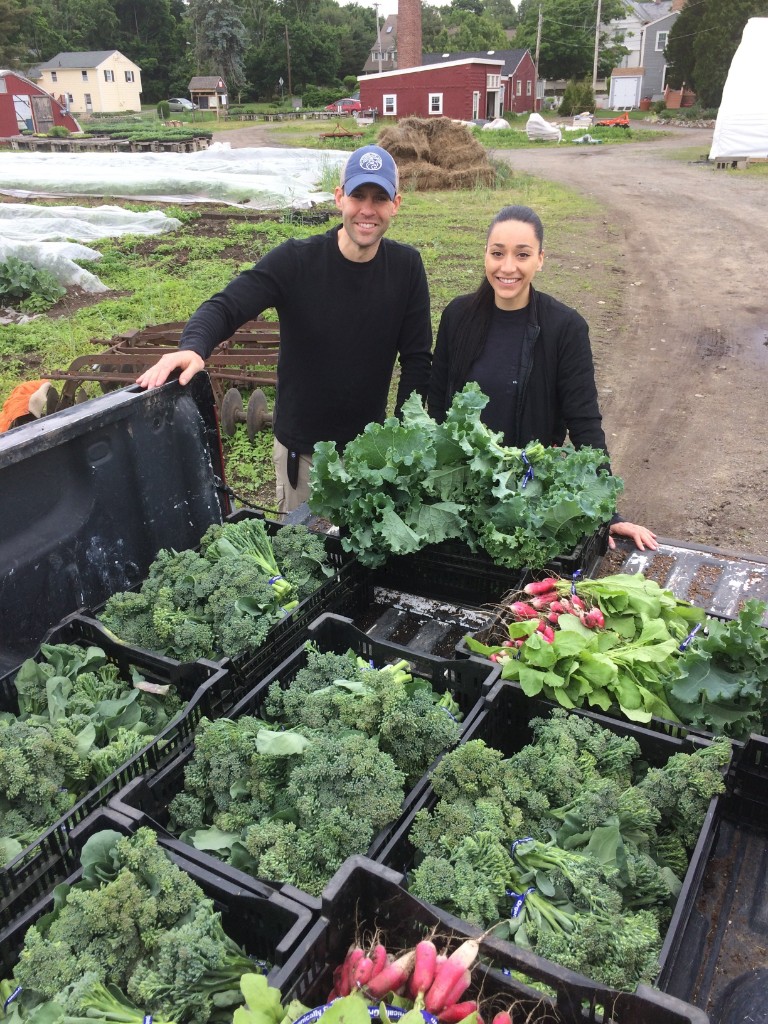Summer 2018 Week 2

This time of year we are planting, planting, planting! The first successions of our flowers, leafy greens, herbs, eggplant, tomatoes, zucchini, summer squash, cucumbers, and peppers are all in the ground. Next up is winter squash, watermelon, and sweet potatoes. The planting itself is rather quick, but prepping our fields to be planted is an incredible feat. Done right, it sets us up for a whole season of healthy vegetables.
This year we are prepping our fields with the intention of minimizing soil compaction and disruption in our fields. Preserving established layers of soil preserves the community of soil microorganisms that helps create a healthy, living soil.
Our first step is mowing the cover crop so that it will start to break down in our soil, adding nutrients and organic matter to our future beds. This year we will use less fertilizer in fields that have had a healthy stand of cover crops! Next we chisel plow our field, using strong 16″ metal fingers to rake through our soil, loosening it while keeping the layers of soil in tact.
Next we use a disk harrow to continue breaking up the mowed cover crop and mix it in to the very top layer of soil. The disk harrow looks like a series of sharp dinner plants, vertically slicing and turning through the soil.
Then, we start to mark our future beds with the tire tracks of the tractor, while running a subsoiler through each bed. The subsoiler slices deeply into the ground (again, not flipping any layers of soil) and provides a channel for water to sink into the ground. Eliminating standing water in our fields minimizes soil diseases taking hold in our fields. Think of fungal-borne soil diseases (ie: late blight in tomatoes) like mosquito larvae–without standing water they don’t have as many places to breed and become established!
Next, we spread fertilizer based on the crop’s needs and results from our fall soil test.
Last, we shape our beds with a bed shaper. If we want to minimize weeds or heat up the ground for heat-loving plants we cover these beds with black plastic and lay drip tape underneath the plastic to provide irrigation.
Our plants now have loose, well-drained soil, with fertility, minimal weed pressure, and the ability to be watered! This is farming.
Here’s the thing: planting takes about a day but prepping the beds can take a week. Much of that week is spent on the tractor, driving for hours at 1 mph. That’s about as tedious as it sounds. That’s where the birds come in.
Emmy, our Assistant Grower, recently mentioned that she’d never been in a place with so many people excited about birds. Driving at 1 mph, over and over the same acres of land, allows us to start to identify each rock, each bump, each weed, each bird as we drive past. The robins and iridescent starlings dive immediately after the tractor to see what tasty insects I’ve just exposed. The barn swallows swoop around the glass greenhouse and pumphouse where they’ve been making nests for 100 years (according to Dennis Busa). The redtail hawks soar above, catching the air currents. The redwinged blackbirds with their red football-pad-shoulders come careening in with feet oustretched to grab onto a blade of rye, swaying wildly upon landing. Even the mourning doves become entertaining, trying to balance their top-heavy bodies on a tiny fence line. Oddly, its from the tractor seat that the farm, and the wildlife it supports, endears itself to me while I get to know intimately the details of our
little corner of the world, as they pass by at 1 mile per hour.


The tractor spedometer Laying plastic and drip tape


Transplanting tomatoes, with Work shares Cliff and Toni with our
another snapper! first harvest.
– Elena Colman
Farm Manager

